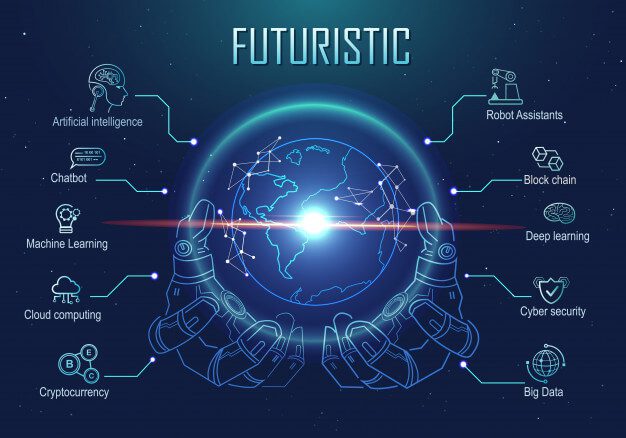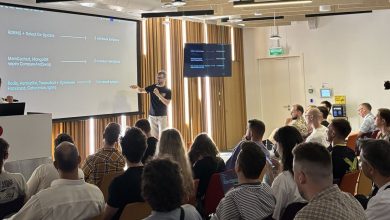
Executives often describe decision-making today with one word: overwhelming. Reports arrive late, dashboards don’t line up, and the critical signals leaders need get buried in noise. By 2025, the world will generate 180 zettabytes of data, yet less than 3% will ever be analysed (IDC). It’s not a lack of data holding companies back; it’s the inability to turn that data into timely, trusted insights.
This gap between data and decisions is especially painful for growth-stage companies trying to scale fast. A CFO may spend days chasing down numbers that should be available in hours. A supply chain manager might rely on gut feel because system reports lag behind reality. A sales leader may miss early warning signs of churn because the signals are scattered across multiple tools.
The result? Missed opportunities, rising risks, and slower growth.
SAP Fiori was designed to address part of this problem. By moving away from the complexity of traditional SAP screens, Fiori gave employees a cleaner, role-based experience.
Tasks that once required navigation through endless menus became simpler, faster, and more intuitive. But simplicity alone isn’t enough anymore. Businesses don’t just need systems that are easy to use; they need systems that are smart.
And that’s where artificial intelligence changes the game. By embedding AI directly into Fiori apps, SAP can shift from being a system of record to becoming a system of intelligence; one that not only shows you what’s happening but also predicts what’s coming and recommends what to do next.
From Simplicity to Intelligence
The original promise of SAP Fiori was straightforward: make enterprise software usable. Instead of overwhelming users with hundreds of irrelevant options, Fiori delivered role-based apps that matched how people actually work. A finance controller could open their dashboard and see only the tasks and reports that mattered to them. A field technician could approve work orders on a mobile device without digging through menus. This shift was a massive step forward; many companies reported up to 60% faster task completion times after adopting Fiori.
But while Fiori solved the usability challenge, it didn’t solve the decision-making challenge. A CFO still needs to reconcile numbers across multiple spreadsheets. A supply chain leader still spends hours investigating delays that could have been flagged earlier. An HR manager still finds out about attrition risks after resignations are already on the table.
Simplified screens don’t help if the information behind them is outdated, siloed, or incomplete. What companies need now is not just a simpler system, but a smarter one.
AI-enhanced Fiori simply displays the latest figures; Fiori apps can begin to interpret data, forecast trends, and recommend next steps. The leap is subtle but transformative: users move from asking, “What happened?” to asking, “What will happen?” and “What should I do about it?”
How AI Enhances Fiori
The integration of AI with SAP Fiori isn’t about adding flashy features; it’s about embedding intelligence into everyday workflows. Imagine logging into your Fiori launchpad and seeing not just your usual tiles, but tiles that are alive with predictive insights. A sales forecast tile that warns you which deals are at risk. A procurement tile that highlights unusual spending. A supply chain tile that flags potential delays before they impact delivery.
- Predictive analytics is one of the most obvious areas of impact. Machine learning models running on SAP BTP can analyse patterns in financial transactions, supply chain flows, or employee behaviour, and push the results directly into Fiori apps. Instead of static numbers, managers see forecasts that adapt in real time. An automotive company, for instance, used SAP BTP predictive models to reduce supply chain forecasting errors by 20%, directly improving on-time delivery.
- Anomaly detection is another powerful capability. Every organisation deals with errors, outliers, and fraudulent activity that slip through manual checks. AI can monitor massive volumes of transactions and flag anomalies automatically. A mid-sized manufacturer piloting anomaly detection in procurement reduced duplicate payments by $2 million in the first year, and the alerts were surfaced directly in Fiori apps.
- AI-powered insights go beyond numbers. With natural language processing, Fiori apps could explain why a pattern matters and suggest next steps. Instead of a vague alert, a user might see: “Invoice activity in Region X is 25% higher than normal. Possible duplicate billing. Recommend cross-checking with supplier Y.” This moves Fiori closer to being a decision-support tool rather than just a reporting interface.
- And then there’s conversational AI. Imagine a built-in assistant inside Fiori that works like a co-pilot. A manager could ask, “Show me which suppliers are at highest risk of delay this quarter,” and get a predictive response without building a query or exporting data. That level of accessibility breaks down barriers between complex analytics and everyday decision-makers.
Practical Use Cases Across the Enterprise
The real test of AI in Fiori isn’t the technology itself but its business impact. Let’s consider how different departments could benefit.
In finance, predictive cash flow forecasting could help CFOs make better liquidity decisions. Deloitte found that 48% of finance leaders rank predictive analytics as their top priority for digital transformation. AI could also spot irregularities in expenses, helping teams prevent fraud or errors before they spiral.
In the supply chain, AI could analyse order patterns, shipping data, and supplier reliability to flag potential bottlenecks weeks in advance. According to McKinsey, companies with AI-enabled supply chains achieve 15% lower logistics costs and 35% shorter delivery times.
In HR, predictive analytics could identify employees at risk of attrition based on historical data, survey results, and workload patterns. Global firms using SAP SuccessFactors’ AI capabilities have reported attrition reductions of up to 10–15% by acting on early signals.
Even in customer service, AI-enhanced Fiori apps could give agents real-time recommendations on how to resolve issues faster, pulling insights from past interactions, product usage, and sentiment analysis.
These are not futuristic ideas; many are already possible today using SAP BTP’s AI services integrated into Fiori apps.
The Benefits of AI-Enhanced Fiori
When decision-making shifts from reactive to predictive, enterprises see tangible benefits. Leaders make faster decisions backed by data rather than instinct. Teams spend less time chasing reports and more time acting on insights. Risks are identified before they become crises, and opportunities are seized before competitors move in.
The financial payoff is clear. Forrester research shows that companies integrating AI into decision-making are 3x more likely to achieve double-digit revenue growth compared to their peers.
Another benefit is adoption. One of the ongoing challenges with any enterprise system is user engagement. Employees often resist new tools because they don’t see immediate value. But when Fiori apps proactively serve up relevant, intelligent insights, users are more likely to embrace them. AI makes the system feel less like a chore and more like a helpful partner.
Ultimately, the promise of AI in Fiori is about transforming SAP from a back-office system into a front-line enabler of smarter business.
Challenges to Consider
Of course, embedding AI into Fiori is not without hurdles. Data quality remains the biggest challenge. Gartner predicts that through 2027, 65% of AI projects will fail due to poor data quality and governance. Companies need strong data practices before they can fully trust AI predictions.
User adoption is another barrier. Employees accustomed to traditional workflows may hesitate to trust AI-driven recommendations. Change management, training, and clear communication are essential to ensure that users not only adopt but also trust the system.
Integration and performance are also practical concerns. Embedding AI models into Fiori apps must be done without slowing down the user experience. IT teams need to design carefully to ensure smooth performance.
Finally, security and compliance cannot be overlooked. AI recommendations must comply with industry regulations, especially when dealing with sensitive financial or personal data.
Enterprises must build safeguards to ensure AI outputs don’t create compliance risks.
Getting Started with AI in Fiori
For companies considering this journey, the key is to start small and scale gradually. Identify high-impact use cases where predictive insights would make the most difference — for example, anomaly detection in procurement or predictive sales forecasting. These quick wins can demonstrate value and build momentum.
Working with partners who specialise in SAP Fiori configuration, adoption, and strategy can accelerate success. External expertise ensures that AI is not bolted on as an afterthought but embedded into Fiori in a way that supports user needs and business objectives.
SAP BTP already offers a suite of AI services and pre-built models that can integrate directly into Fiori apps, making it easier to experiment without starting from scratch.
Training is equally important. Users need to understand not just how to use new AI-enhanced apps, but why they provide better outcomes. Building that trust is the difference between adoption and abandonment.
The Road Ahead
SAP Fiori simplified enterprise UX. AI has the potential to make it intelligent. Together, they can shift enterprises from being reactive to proactive, from chasing reports to anticipating outcomes, and from fragmented workflows to confident, data-driven decisions.
The future of SAP UX is about making it smarter. According to PwC, AI could contribute $15.7 trillion to the global economy by 2030. Companies that embrace AI-enhanced Fiori now will have a competitive edge: faster decisions, happier employees, and a foundation for growth that can keep pace with the speed of business.


